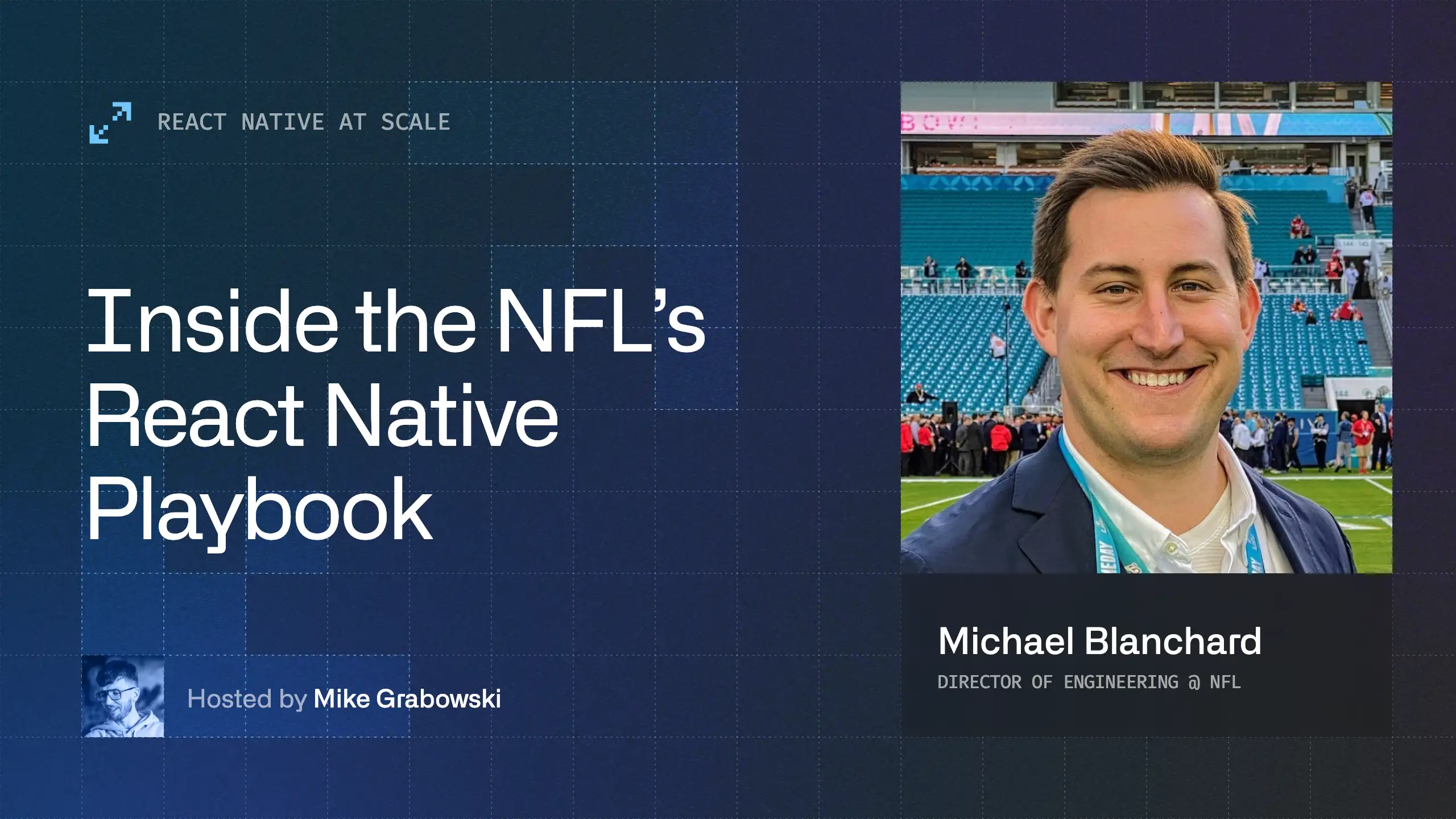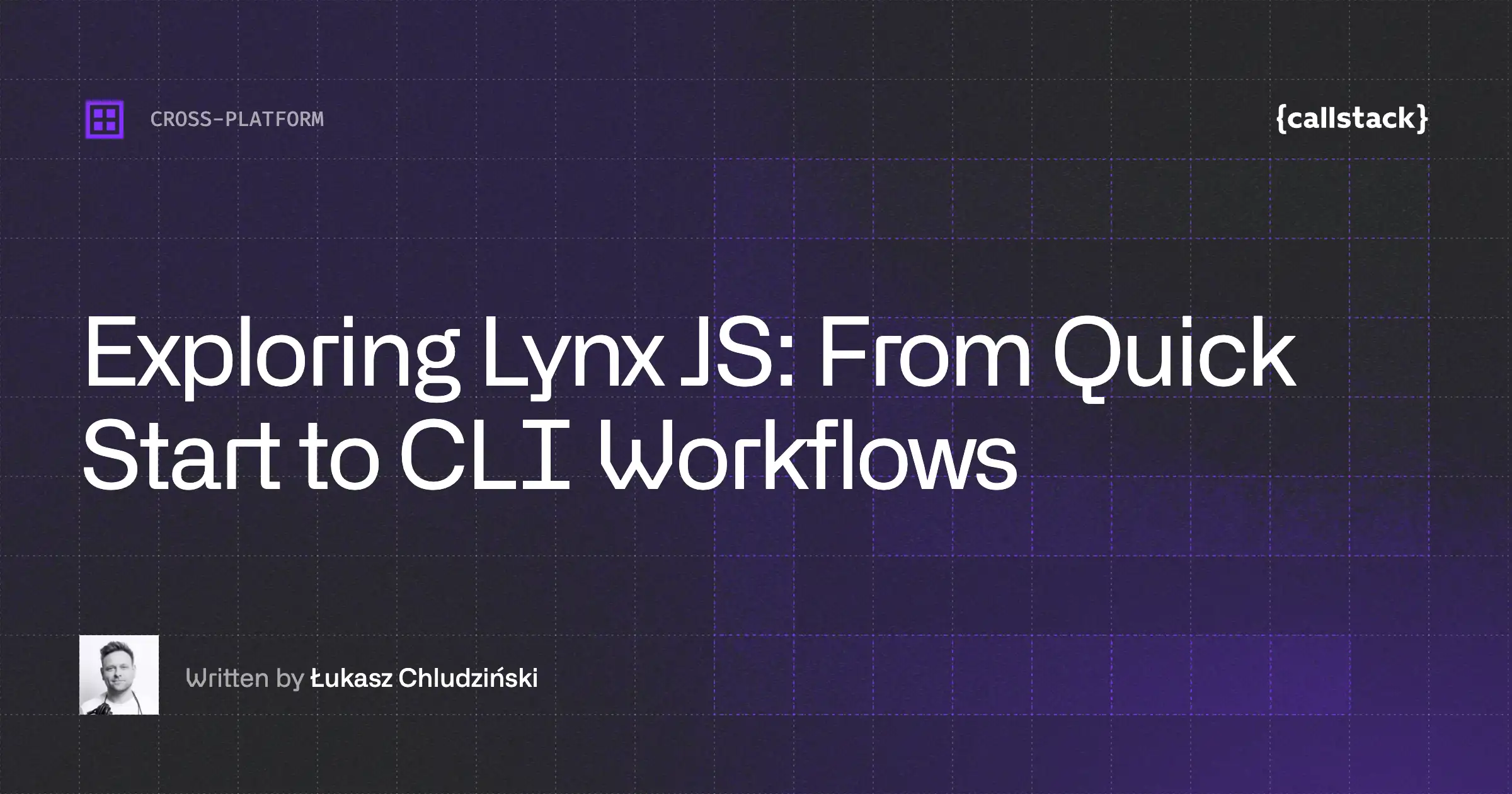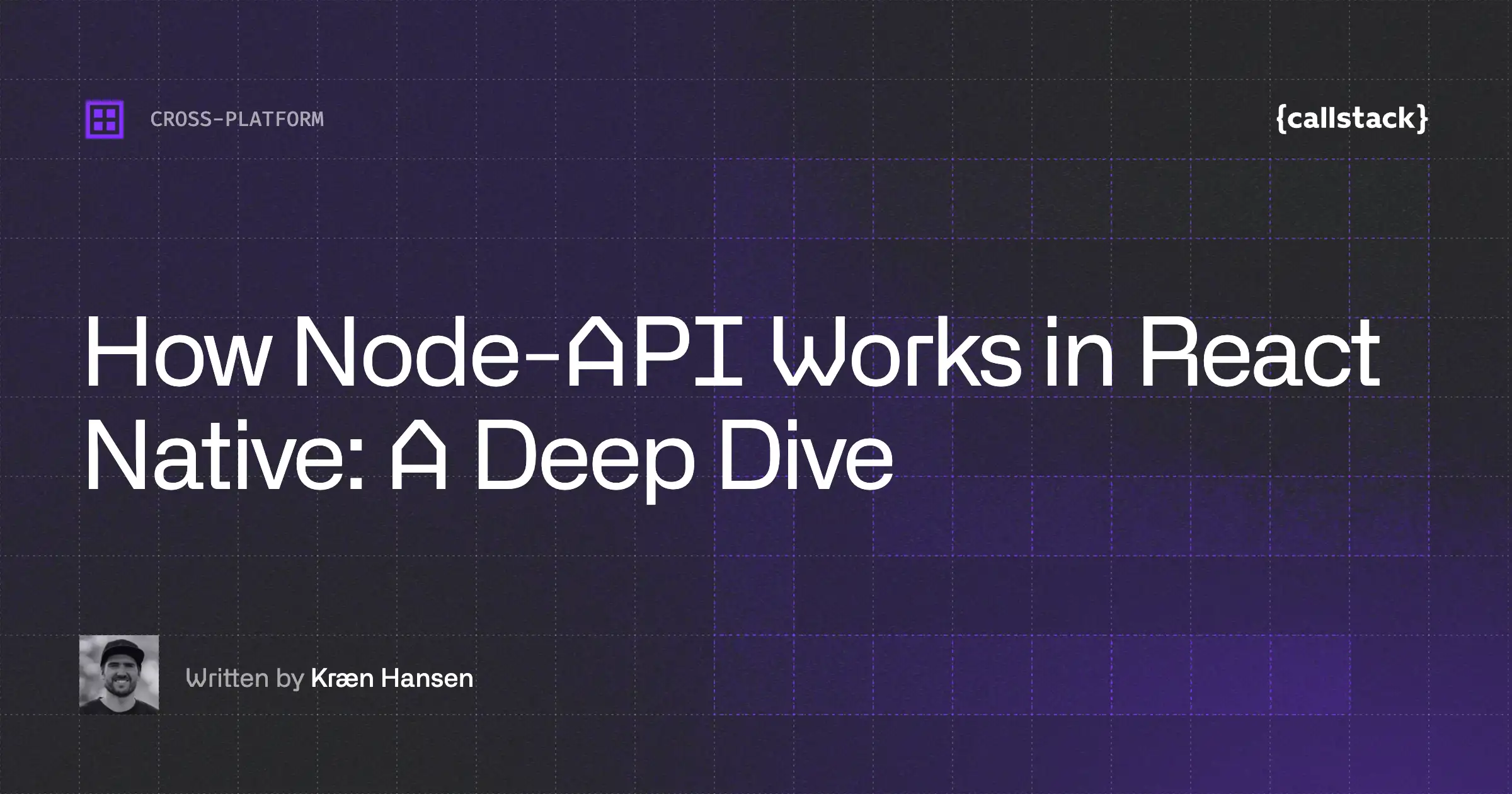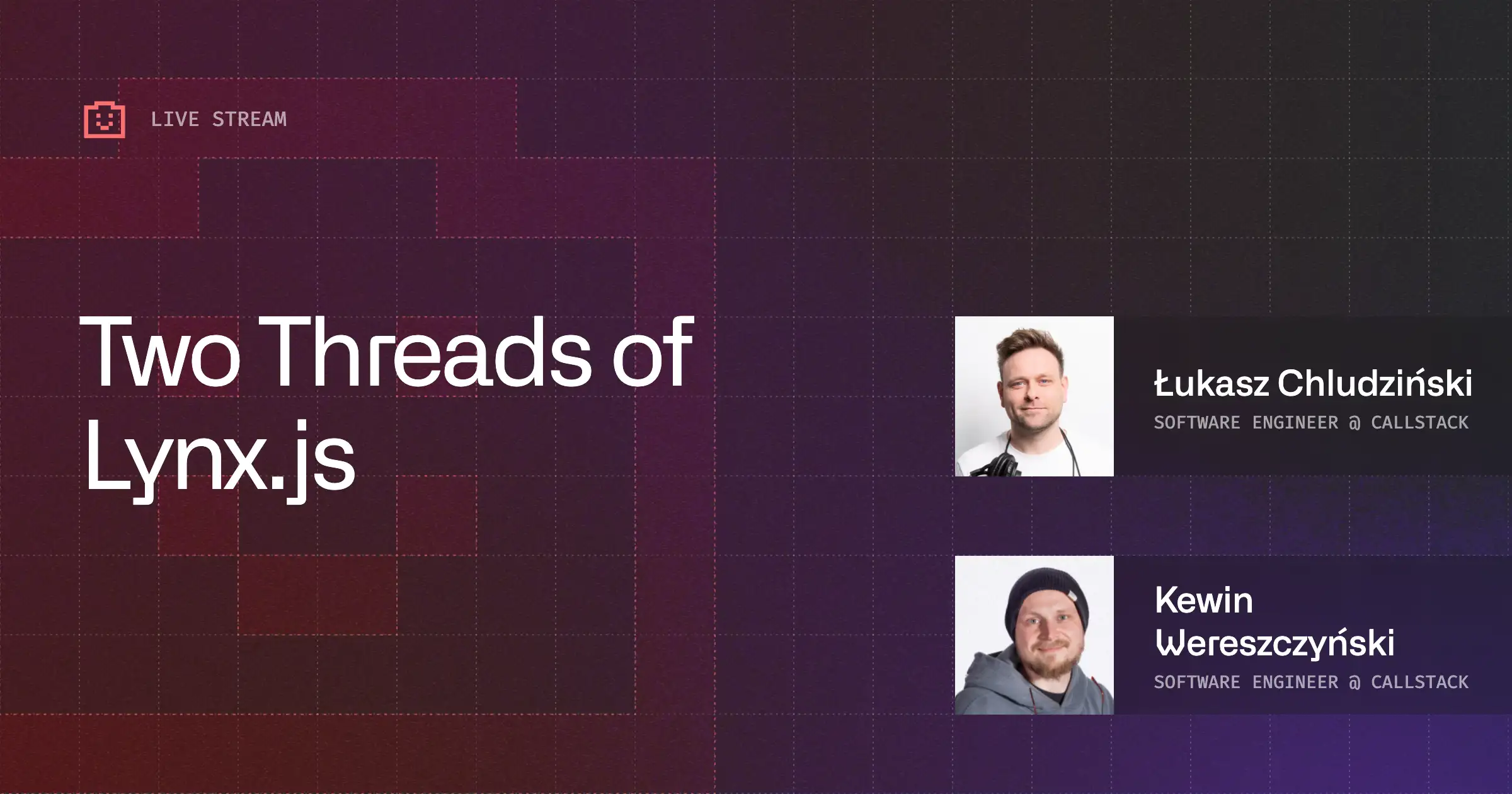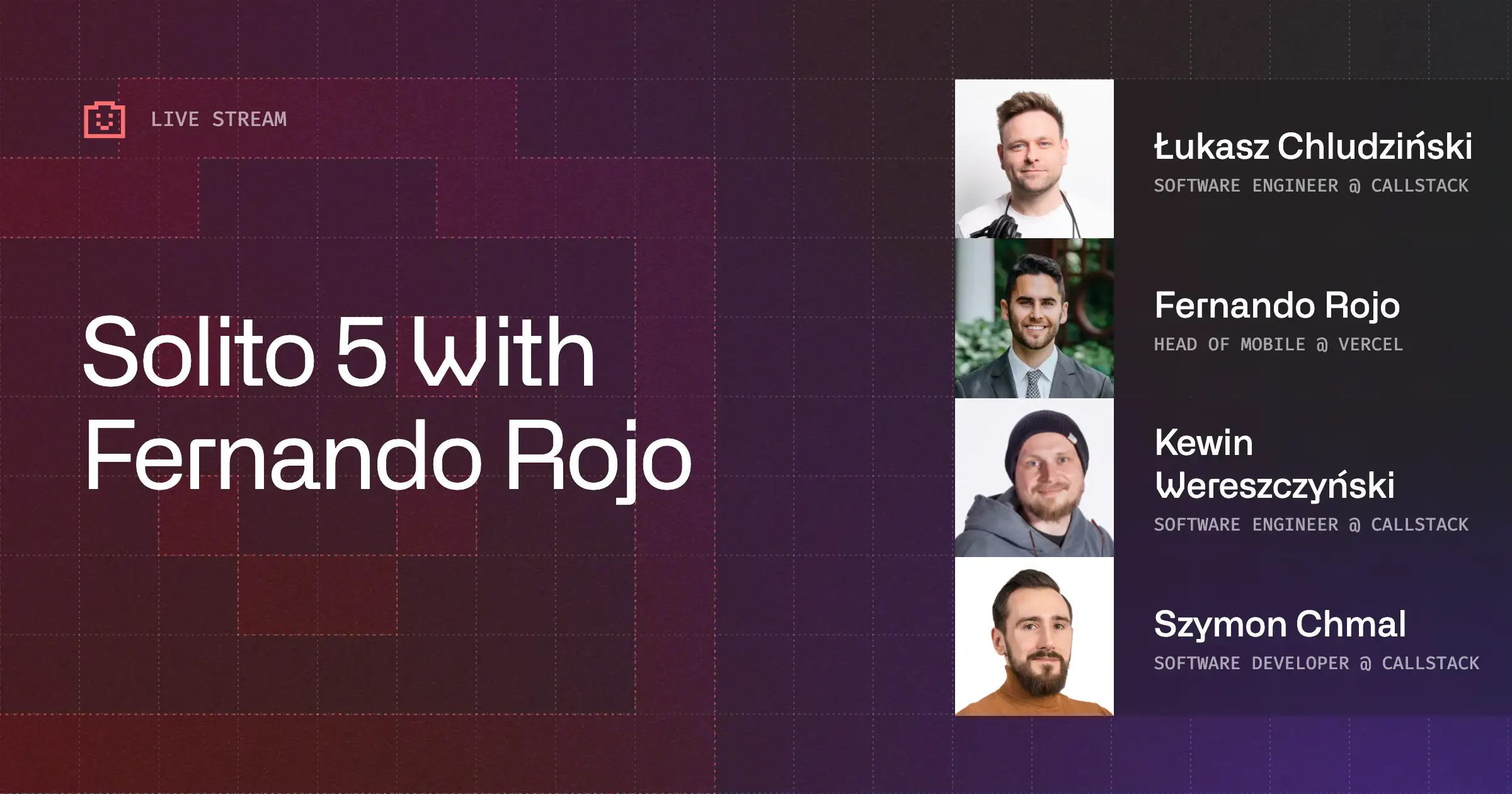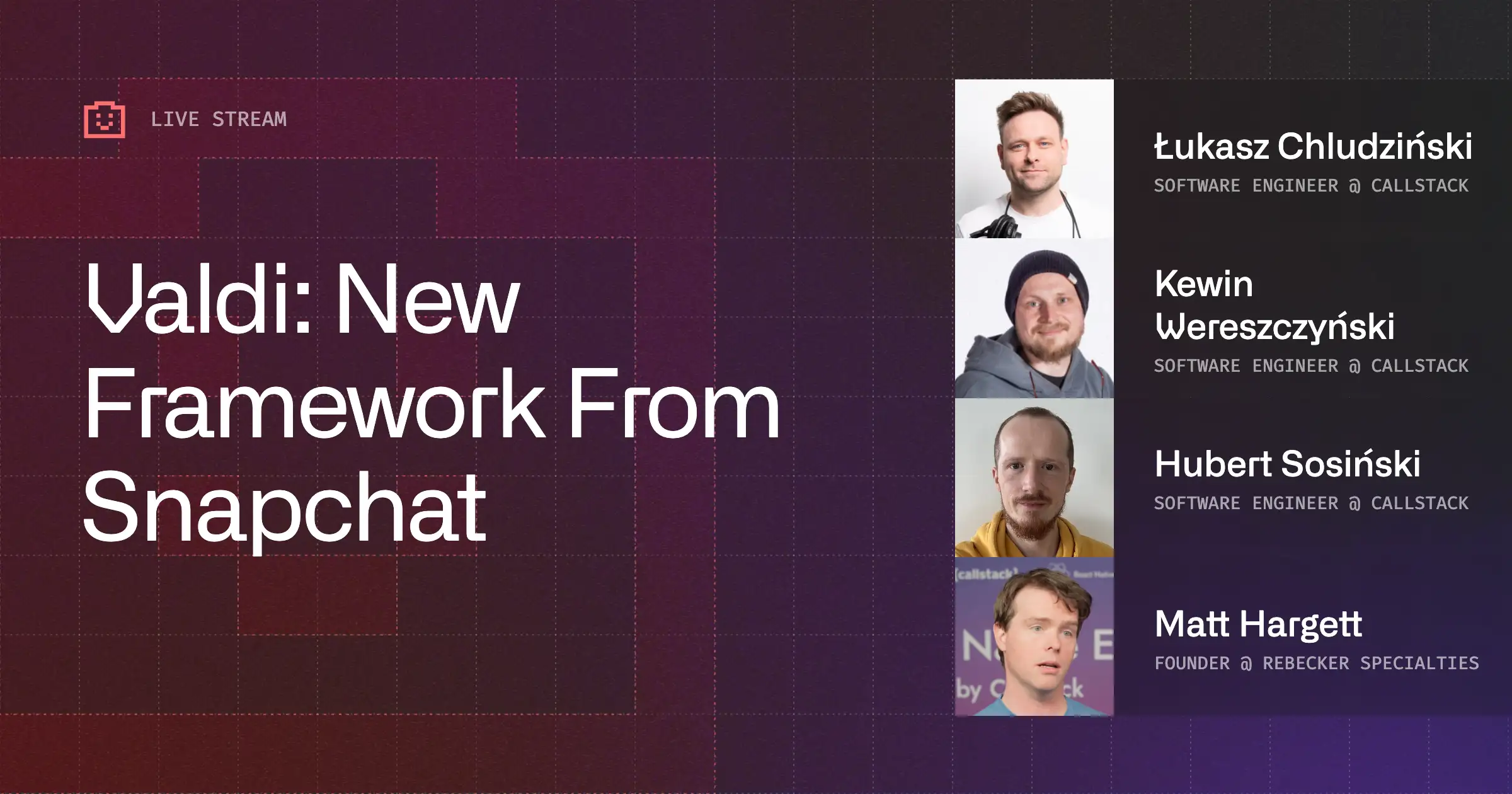For the NFL, technology is as time‑sensitive as the game itself. Millions of fans expect live video and stats to work flawlessly across devices, from iPhones to Xboxes, every game day. Behind the scenes, that means building and maintaining apps for mobile, web, and a long list of connected TVs under unmovable deadlines like kickoff and the Super Bowl.
In this episode of React Universe On Air, Mike Grabowski talks with Michael Blanchard, Director of Engineering at the NFL, about how React Native became the foundation for this high‑pressure, multi‑platform ecosystem.
Guest & episode summary
Michael Blanchard has spent nearly nine years at the NFL, starting as a web engineer before stepping into the Director of Engineering role. Today he leads teams responsible for nfl.com, three mobile apps (NFL, Fantasy, Network), a cross‑platform video player, and a suite of connected TV apps. His journey with React Native began when the NFL sought a faster way to deliver consistent fan experiences across platforms without multiplying team sizes.
The episode’s host, Mike Grabowski, CTO and Founder at Callstack, brings both curiosity and deep technical grounding as he unpacks the NFL’s migration strategy, their evolution from Haul/Webpack to Metro and Expo, and the cultural shifts that enabled engineers from web and native backgrounds to collaborate in one monorepo.
React Native adoption decisions
The NFL didn’t tiptoe into React Native. Instead, they merged web, iOS, and Android teams into a single front‑end group and started a full greenfield project to replace their flagship app in time for the 2018 season. A few years later, they launched a second rewrite to align with new product goals like NFL+, showing how technical resets can serve evolving business needs.
Journey to React Native
From custom Webpack builds and React Native Navigation to Metro bundler and React Navigation, the NFL’s setup has shifted with the ecosystem. Michael details how Expo SDKs gradually replaced community libraries, why their video player still requires custom native work, and how Expo fingerprinting keeps builds efficient. The NFL journey illustrates a balance of pragmatism and adoption of modern tooling.
Technical operations and tooling
The team’s CI/CD story spans from Jenkins and Fastlane to a modern GitHub Actions pipeline powered by EAS Build. With 20-30 developers submitting PRs daily, selective builds, unit test optimizations, and smart caching are critical to keeping engineering velocity high. Their monorepo structure allows shared libraries across mobile, web, and TV while keeping ownership boundaries clear.
Team evolution
Adopting React Native meant reshaping the NFL development team as well. Web and native engineers started from zero together, learning new primitives, collaborating on bridging, and sharing ownership of components. Some engineers transitioned fully into React Native, while others pursued native‑first roles. The result is a culture where experimentation with Expo, Next.js, and React Native Web is encouraged, and delivery is measured against game‑day deadlines.
What you’ll learn
- Why the NFL chose a full greenfield strategy twice
- How business milestones like NFL+ shaped technical resets
- What lessons came from moving from Haul/Webpack to Metro
- How Expo SDKs gradually replaced community packages
- How GitHub Actions and EAS Build transformed their CI/CD pipeline
- Strategies for managing 20–30 PRs daily across a monorepo
- How React Native powers not only mobile, but also web and multiple connected TVs
- What cultural shifts helped web and native engineers work as one team
Resources
- Mike Grabowski on X, LinkedIn, and GitHub
- Michael Blanchardon X, LinkedIn, and GitHub
- NFL apps and digital products
- Michael Blanchard’s talk at App.js Conf 2025: Scaling Enterprise CI/CD: A Migration Success Story
Learn more about Cross-Platform
Here's everything we published recently on this topic.
We can help you move
it forward!
At Callstack, we work with companies big and small, pushing React Native everyday.
Code Sharing
Implement effective code-sharing strategies across all platforms to accelerate shipping and reduce code duplication.
Migration to React Native
Plan and execute a migration from native or hybrid stacks to React Native with minimal disruption and clear technical direction.
Desktop App Development
Develop powerful cross-platform desktop applications that work across Linux, Windows and Mac.
Web App Development
Build a solid foundation that meets latest standards and scales easily to other platforms in the future.

